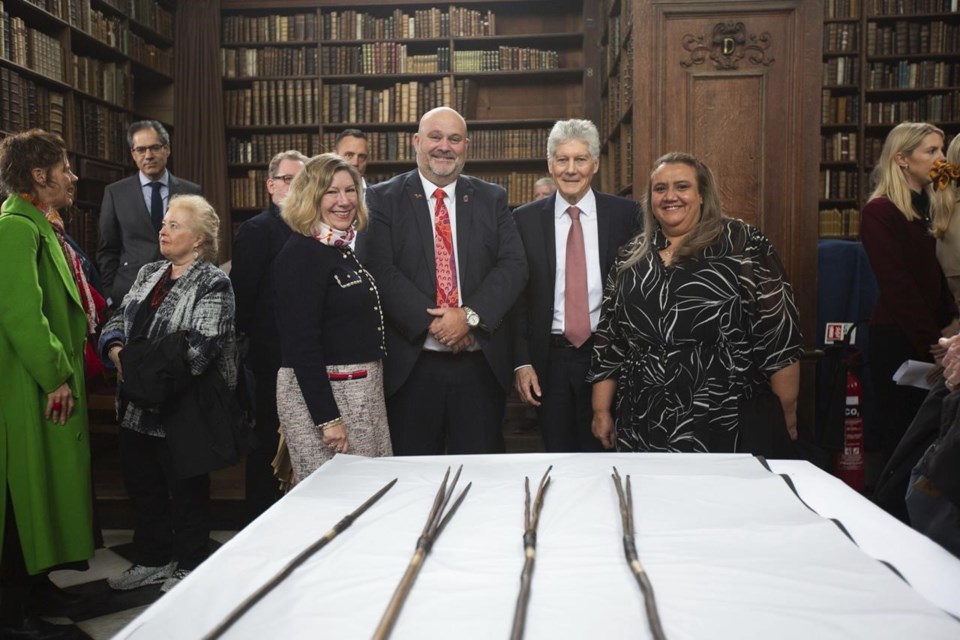LONDON (AP) ΓÇö Four Aboriginal spears that were taken to England by Captain James Cook more than 250 years ago were returned Tuesday to Australia's Indigenous community at a ceremony in Cambridge University.
The artifacts were all that remain of some 40 spears that Cook and botanist Joseph Banks took in April 1770, at the time of the first contact between Cook's crew and the Indigenous people of Kamay, or Botany Bay.
The spears were presented to Trinity College, Cambridge by John Montagu, the 4th Earl of Sandwich the following year, along with other items from CookΓÇÖs voyage across the Pacific. The spears have been held at the university's Museum of Archaeology and Anthropology since the early 20th century.
Their return, agreed last year following a campaign and a formal repatriation request, was hailed as a step toward reconciliation and a greater understanding of Britain and Australia's shared history.
Sally Davies, head of Trinity College, said it was the ΓÇ£right decisionΓÇ¥ to return the spears and that the institution was ΓÇ£committed to reviewing the complex legacies of the British empire, not least in our collections."
The spears were ΓÇ£exceptionally significantΓÇ¥ because they were the first artifacts collected by the British from any part of Australia that remain, said Nicholas Thomas, director of Cambridge's archaeology museum.
ΓÇ£They reflect the beginnings of a history of misunderstanding and conflict," he said.
The Gujaga Foundation, which leads cultural and research programs within the La Perouse Aboriginal community, said the artifacts' return marked a ΓÇ£momentous occasion."
ΓÇ£The spears were pretty much the first point of European contact, particularly British contact with Aboriginal Australia," said Ray Ingrey, the foundation's director.
ΓÇ£Ultimately, theyΓÇÖll be put on permanent display for everyone to go see, at the very spot they were taken from 250 years ago,ΓÇ¥ he added.
The spears were taken by members of CookΓÇÖs expedition from an unoccupied Aboriginal campsite, according to the National Museum of AustraliaΓÇÖs website.
A diary entry by Banks that the website cited read: ΓÇ¥(We) threw into the house to them some beads, ribbands, cloths &c. as presents and went away. We however thought it no improper measure to take away with us all the lances (spears) which we could find about the houses, amounting in number to forty or fifty.ΓÇ¥
Ingrey said the spears were ΓÇ£undoubtedly taken without permission.ΓÇ¥
The spears will be displayed at a new visitor center to be built at Kurnell, Kamay.
Sylvia Hui, The Associated Press




